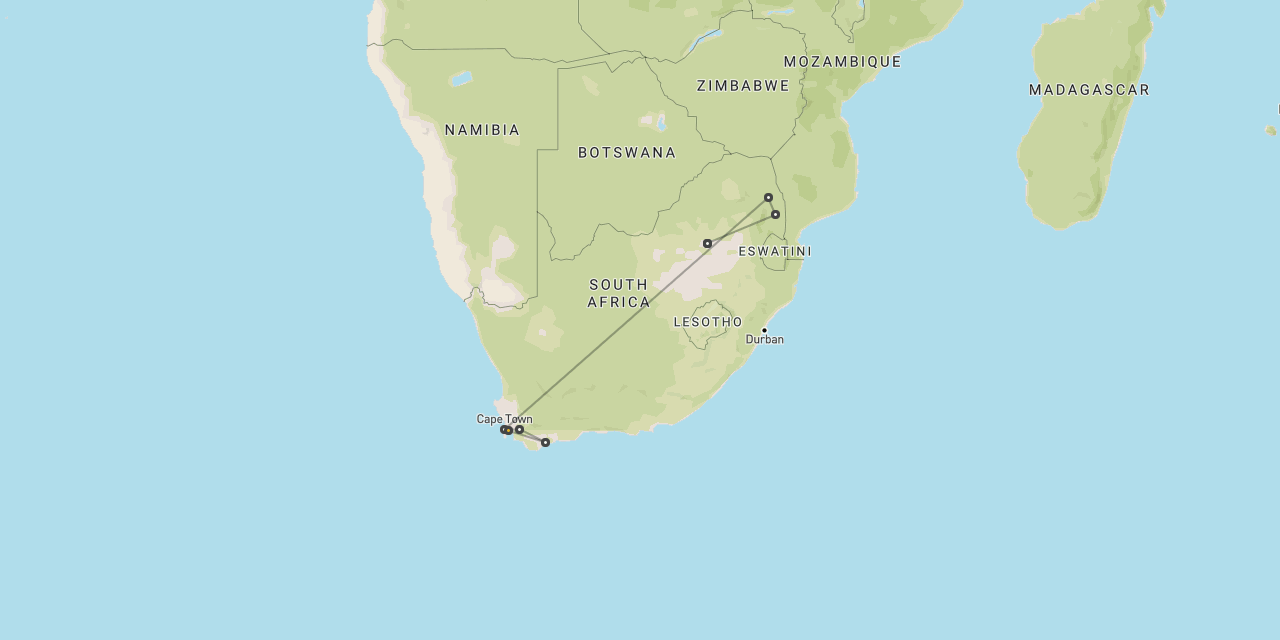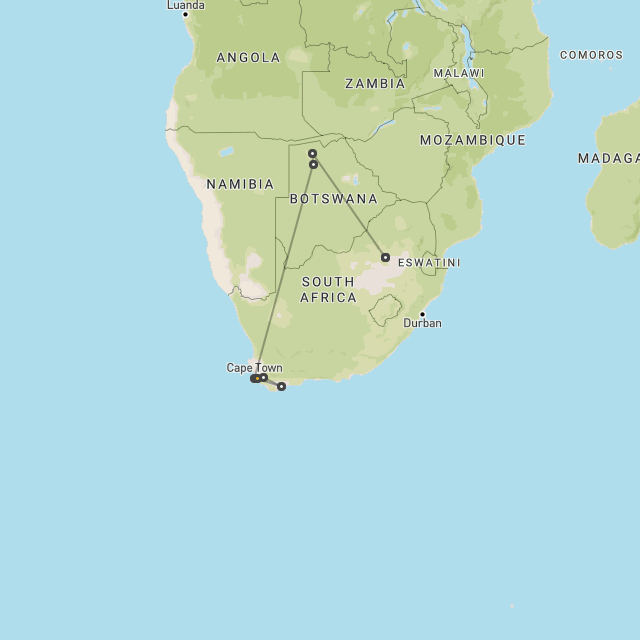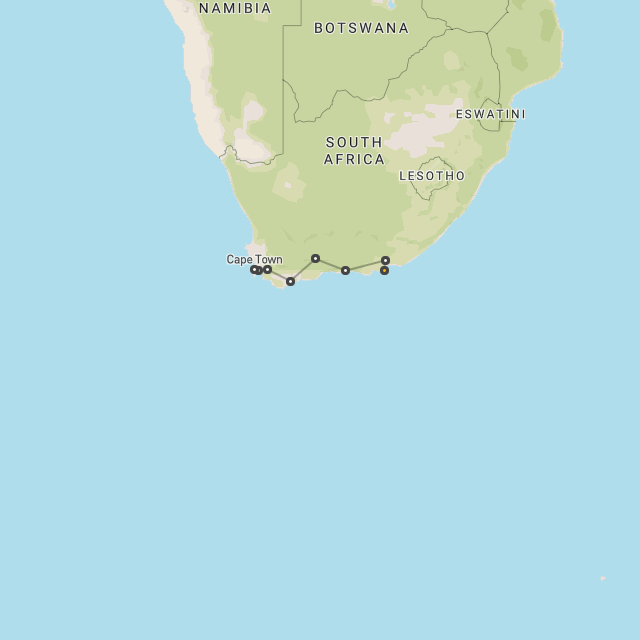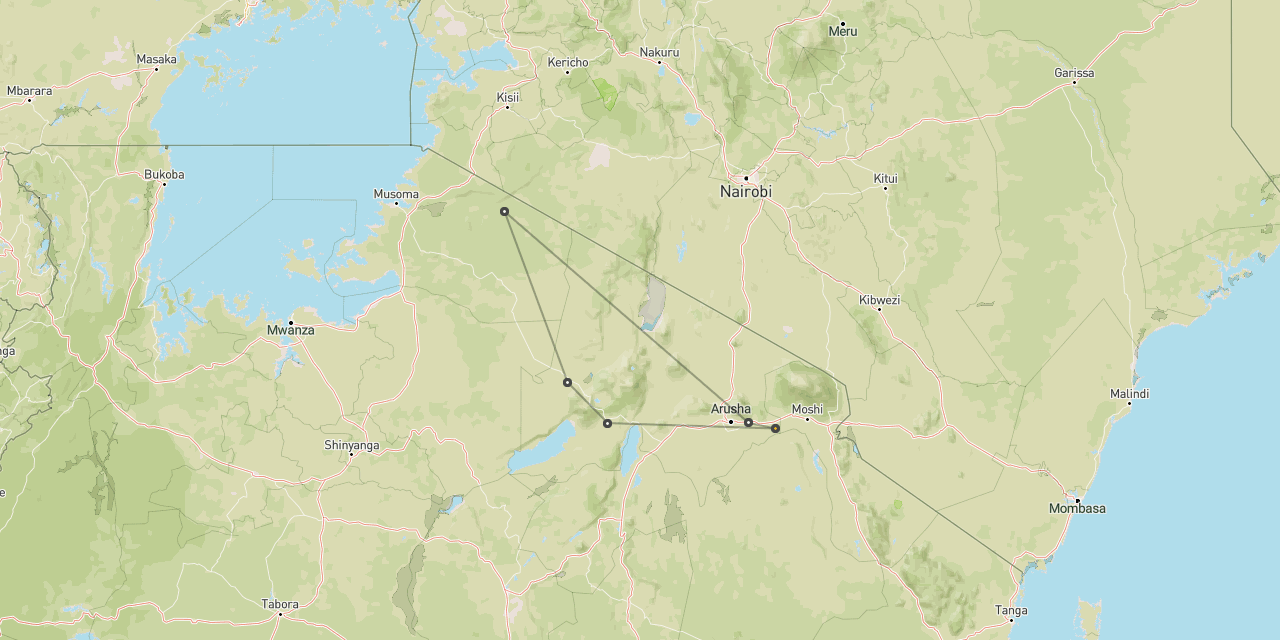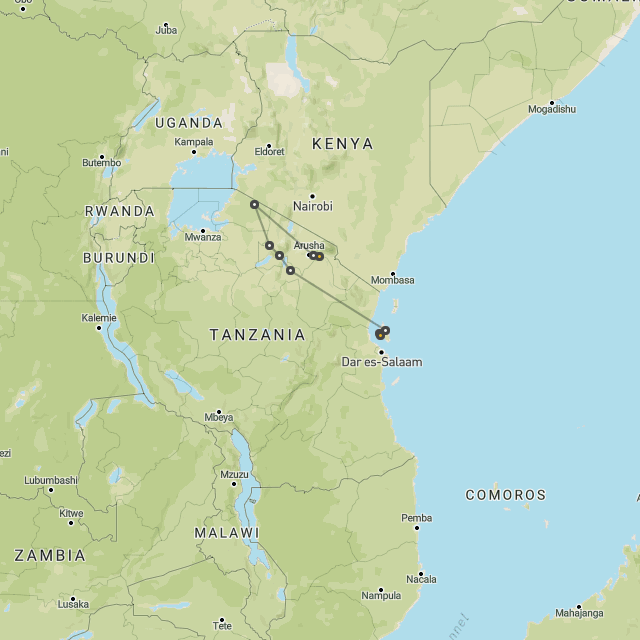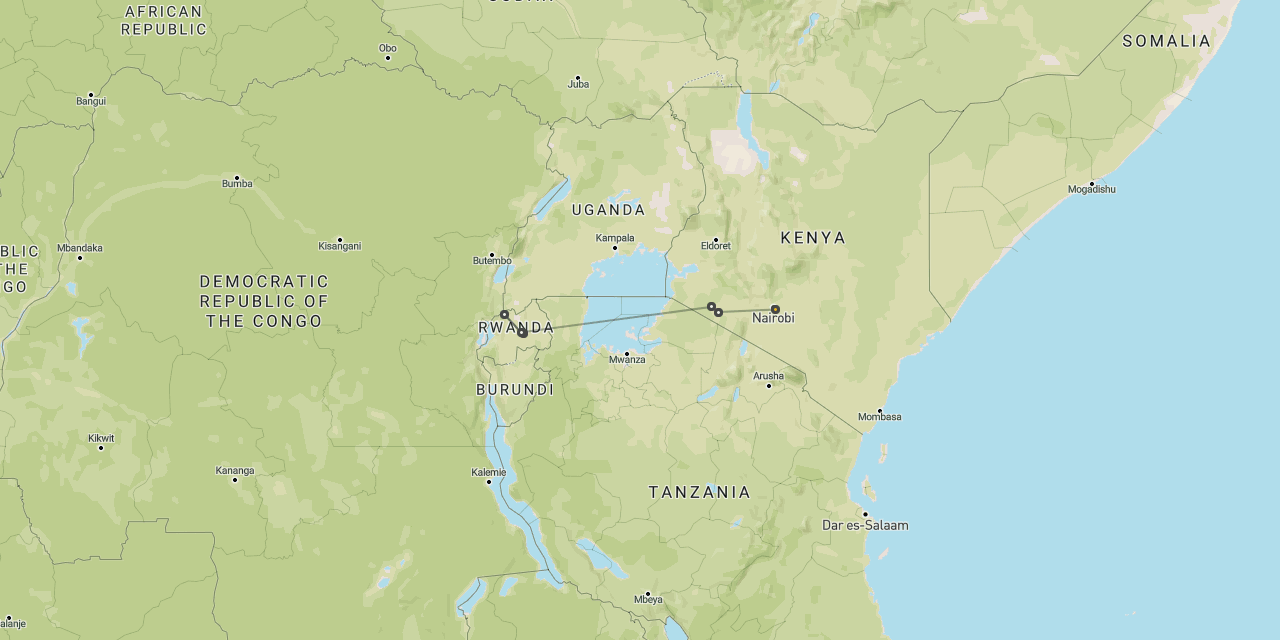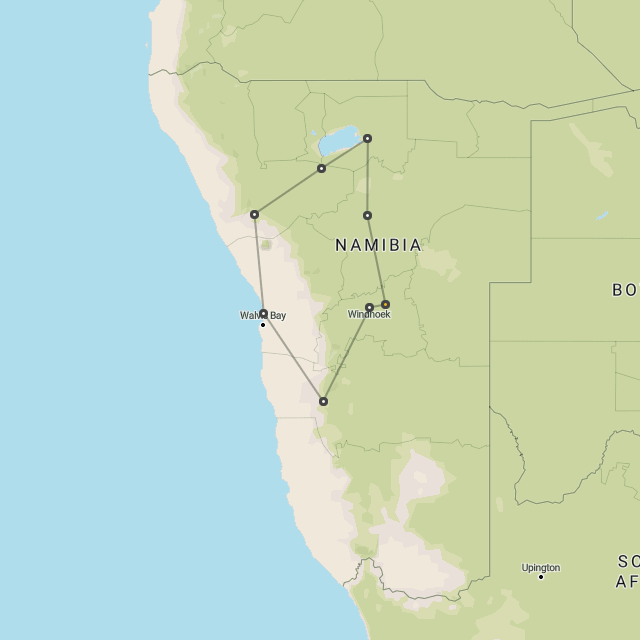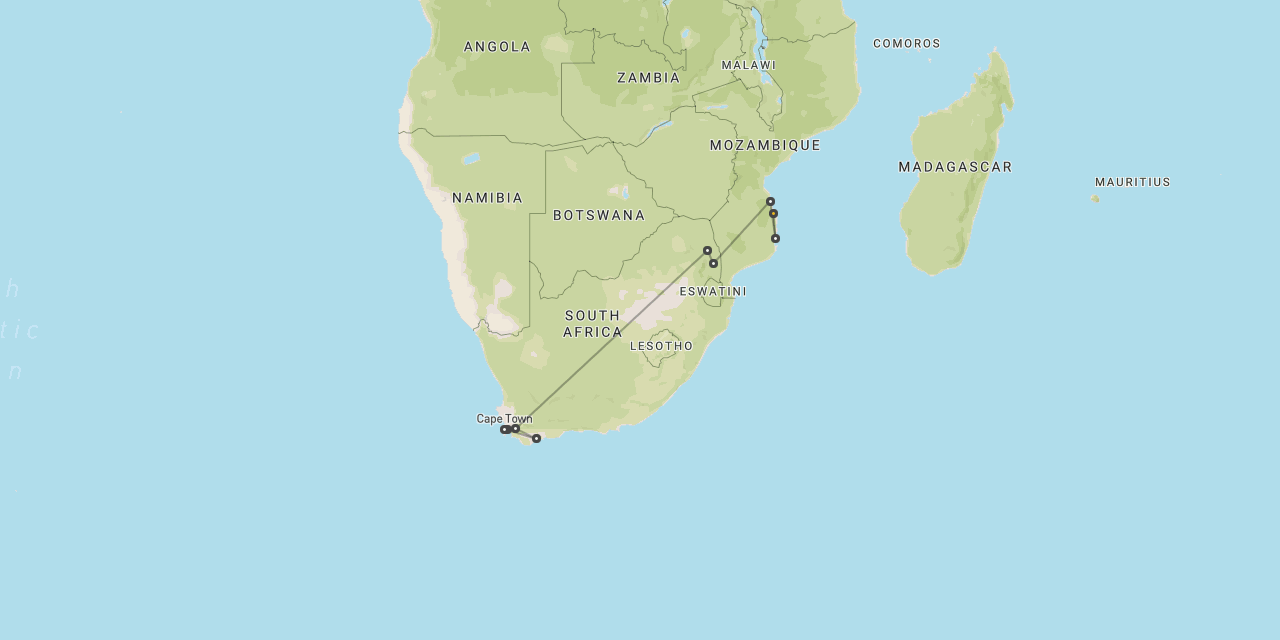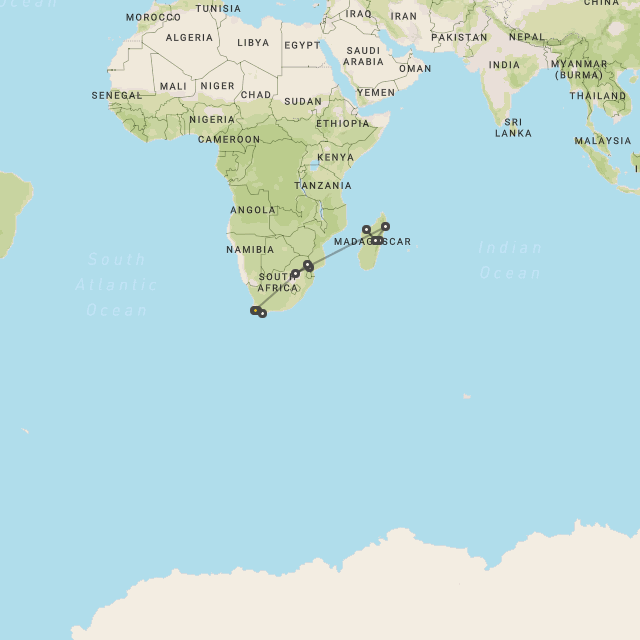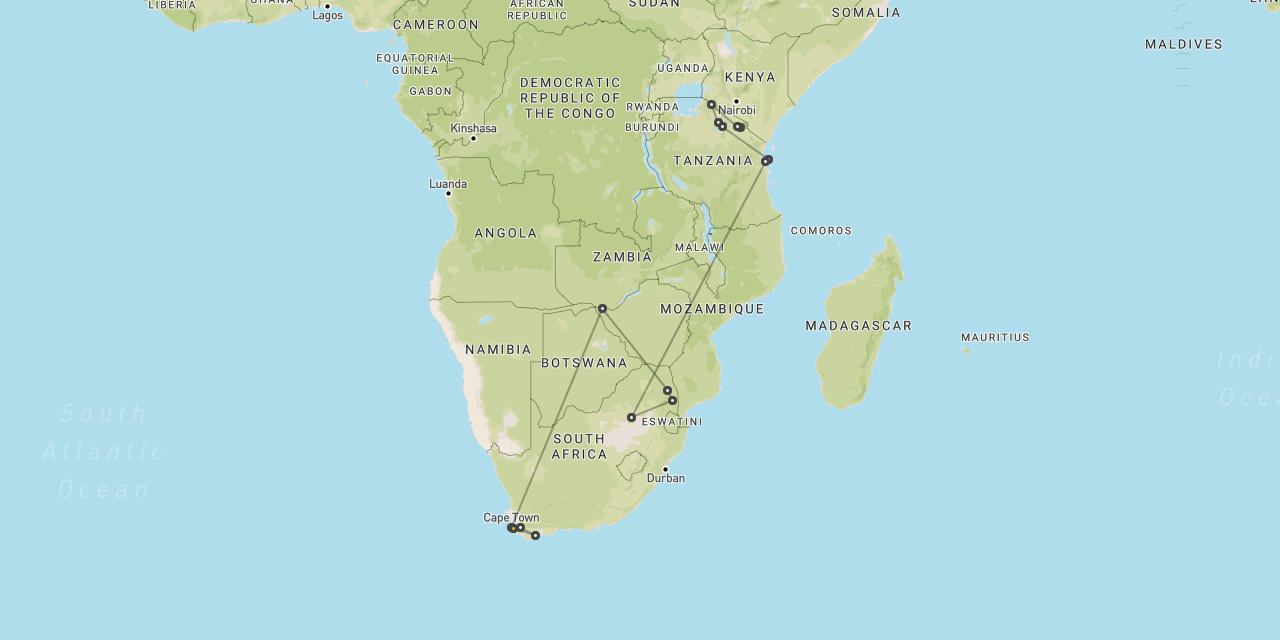
When to go on safari in Kenya
Kenya
is generally best visited during
the Jul-Nov dry season

the less obvious months experience much lower visitor numbers
The various areas of Kenya are not only very seasonal, but there are significant differences in climate across the country. Careful planning is extremely important.
The classic time to go on safari in Kenya is during the main Jul-Oct dry season, when weather conditions should be warm and sunny everywhere and wildlife viewing should be at its strongest, including the migration herds in the Maasai Mara. Visitor traffic is a significant issue and traffic avoidance is important.
The period Nov-Dec usually marks the end of the dry season in most areas, but in reality the short rains are unpredictable and sporadic. Although there can be some considerable weather around, the experience usually remains very enjoyable.
Another interesting period to go on safari in Kenya is the Jan-Mar early green season, when the more naturally arid safari areas to the north and southeast again experience good weather and reasonably strong wildlife viewing.
The Apr-Jun period is usually dominated by the long rains, which tend to be much more reliable and heavy. If you are ready for some considerable weather, the experience should remain very enjoyable. Wildlife viewing can be more challenging, but there’s still plenty to see and visitor traffic is much lower.
Seasonality data for safari in Kenya
we will help you to find the perfect
combination of safari locations and lodges

January is generally considered to be a pretty good month to visit Kenya.
Although the more southerly reserves are continuing to experience the short rains, the north of the country and the tropical coast are both much drier.
In the Maasai Mara, January is usually the third month of the green season. Temperatures should be around 27C/81F and rainfall should remain stable at around 75mm/3″ for the month. The main migration herds have long since departed for the south. However, there should also be strong general wildlife viewing, with plenty of predator action. Most people choose to head to the Serengeti (in Tanzania) at this time, where the migration calving is underway.
In the northern areas of Laikipia, Samburu and Mathews Range, conditions are likely to be considerably better. Temperatures should still be comfortable, but rainfall should drop to around 25mm (1”) for the month. Wildlife is likely to remain dispersed, but increasingly accessible thanks to the drier backtracks.
Conditions are now good down on the tropical coast, where temperatures are rising to a potentially uncomfortable 34C/93F, but with rainfall right down at 25mm/1″ for the month.
Visitor numbers in January are usually very low from around the 5th of the month, which goes a long way to offset the other disadvantages and makes this a potentially attractive time to explore usually more busy areas.
changeable weather and traffic conditions
January is generally considered to be a pretty good month to visit Kenya.
Although the more southerly reserves are continuing to experience the short rains, the north of the country and the tropical coast are both much drier.
In the Maasai Mara, February is the fourth month of the green season. Temperatures should be a pleasant 28C/82F, but rainfall increases to around 100mm/4″ for the month. The main migration herds have long since departed for the south. However, there should also be strong general wildlife viewing, with plenty of predator action. Most people choose to head to the Serengeti (in Tanzania) at this time, where the migration calving is underway.
In the northern areas of Laikipia, Samburu and Mathews Range, conditions are likely to be considerably better. Temperatures should still be comfortable, but rainfall should drop further to around 15mm (0.5”) for the month. Wildlife is likely to remain dispersed, but increasingly accessible thanks to the drier backtracks.
Conditions are now good down on the tropical coast, where temperatures are still up at a potentially uncomfortable 34C/93F, but with rainfall right down at 15mm/0.5″ for the month.
Visitor numbers in February are usually relatively low, which goes a long way to offset the other disadvantages and makes this a potentially attractive time to explore usually more busy areas.
far better in the north than the south
March is generally considered to be a more challenging month to visit Kenya.
Although the more southerly reserves are continuing to experience the short rains, the north of the country and the tropical coast remain reasonably dry.
In the Maasai Mara, March is the fifth month of the green season. Temperatures should be a pleasant 28C/82F, but rainfall increases again to around 125mm/5″ for the month. The main migration herds have long since departed for the south. However, there should also be reasonably strong general wildlife viewing, with plenty of predator action (although the grasses are now longer and impeding visibility). Most people choose to head to the Serengeti (in Tanzania) at this time, where the migration calving is underway.
In the northern areas of Laikipia, Samburu and Mathews Range, conditions are likely to be considerably better. Temperatures should still be comfortable, but rainfall should remain relatively low at around 25mm (1”) for the month. Wildlife is likely to remain dispersed, but increasingly accessible thanks to the drier backtracks.
Conditions are just starting to turn down on the tropical coast, where temperatures are still up at a potentially uncomfortable 34C/93F and rainfall is climbing slightly to 50mm/2″ for the month.
Visitor numbers in March are usually relatively low, which goes a long way to offset the other disadvantages and makes this a potentially attractive time to explore usually more busy areas.
starting to get more rainy in most areas
April is generally considered to be a very challenging month to visit Kenya.
In the Maasai Mara, April is the sixth month of the green season. Temperatures should be a pleasant 26C/79F, but rainfall increases dramatically to around 175mm/7″ for the month. The main migration herds have long since departed for the south. There should still be reasonably strong general wildlife viewing, with plenty of predator action. However, the grasses are now longer and the backtracks are muddier, both of which impede the safari experience.
In the northern areas of Laikipia, Samburu and Mathews Range, conditions are also more testing than usual. Temperatures should still be comfortable, but rainfall is likely to increase to around 75mm (3”) for the month. Wildlife viewing is much more challenging.
Conditions are now pretty testing down on the tropical coast, where temperatures are still up at a potentially uncomfortable 33C/91F and rainfall is rising to a considerable 150mm/6″ for the month.
Visitor numbers in April are usually very low, which may go some of the way to offsetting the very significant disadvantages. It’s really a month reserved for experienced safari travellers who are paranoid about traffic.
really challenging conditions in almost all areas
May is the second and last month of the transition from the warm green season to the cool dry season.
May is generally considered to be a relatively challenging month to visit Kenya.
In the Maasai Mara, May is the seventh month of the green season. Temperatures should be a pleasant 25C/77F, but rainfall continues to be up around 125mm/5″ for the month. The main migration herds have long since departed for the south. There should still be reasonably strong general wildlife viewing, with plenty of predator action. However, the grasses are now longer and the backtracks are muddier, both of which impede the safari experience.
In the northern areas of Laikipia, Samburu and Mathews Range, conditions are again improving. Temperatures should still be comfortable and rainfall should fall back to around 25mm (1”) for the month. Wildlife viewing is still quite challenging, but the experience is more enjoyable.
Conditions are still pretty testing down on the tropical coast, where temperatures are still up at a potentially uncomfortable 31C/88F and rainfall has risen further to a remarkable 250mm/10″ for the month.
Visitor numbers in May are usually quite low, which may go some of the way to offsetting the various disadvantages. It’s really a month reserved for experienced safari travellers who are paranoid about traffic.
really challenging conditions in most areas
June is generally considered to be a relatively attractive month to visit Kenya.
All just about all the various areas, conditions are not perfect, but they are improving fast and the bush is pretty and green, with lots of flowers and baby animals.
In the Maasai Mara, June is the transition month into the early dry season. Temperatures should be a pleasant 25C/
77F and rainfall drops to around 50mm/2″ for the month. The main migration herds are yet to arrive from the south. There should still be reasonably strong general wildlife viewing, with plenty of predator action. However, the grasses are long and the backtracks may remain muddy, both of which can impede the safari experience.
In the northern areas of Laikipia, Samburu and Mathews Range, conditions are also much improved. Temperatures should still be comfortable and rainfall continue to fall back to around 15mm (0.5”) for the month. Wildlife viewing is starting to improve, as the grasses yellow and start to drop.
Conditions are much improved down on the tropical coast, where temperatures are down to a more comfortable 28C/82F and rainfall has dropped to 75mm/3″ for the month.
Visitor numbers in June are starting to increase, but are well off the peaks of the next few months.
a transition month with rapidly improving conditions
July is generally considered to be a very strong month to visit Kenya.
By this time, the whole of the country is enjoying dry and sunny conditions, with comfortable temperatures.
In the Maasai Mara, temperatures should be around 25C/77F, with rainfall down around 25mm/1″ for the month. The main migration herds should be arriving from the Serengeti, so river crossings start to become a major feature, with plenty of crocodile action. There should also be strong general wildlife viewing, with plenty of predator action.
In the northern areas of Laikipia, Samburu and Mathews Range, where conditions are generally more arid, temperatures should be comfortable, with very low chances of rain. Wildlife viewing should be very strong.
Conditions are also good down on the tropical coast, where temperatures should be around 29C/84F, with rainfall at a relatively low 50mm/2″ for the month.
Visitor numbers in July are very high in July, so traffic avoidance techniques should be applied, including the use of private concessions in the Maasai Mara and more remote lodges in other areas.
great conditions for safari, but a strong need to avoid the crowds
August is generally considered to be a very strong month to visit Kenya.
At this time, the whole of the country is enjoying dry and sunny conditions, with comfortable temperatures.
In the Maasai Mara, temperatures should be around 25C/77F, with rainfall down around 25mm/1.5″ for the month. The main migration herds should have arrived from the Serengeti, so river crossings are a major feature, with plenty of crocodile action. There should also be strong general wildlife viewing, with plenty of predator action.
In the northern areas of Laikipia, Samburu and Mathews Range, where conditions are generally more arid, temperatures should be comfortable, with very low chances of rain. Wildlife viewing should be very strong.
Conditions are also good down on the tropical coast, where temperatures should be around 29C/84F, with rainfall at a relatively low 50mm/2″ for the month.
Visitor numbers in August are extremely high in August, so traffic avoidance techniques should be applied, including the use of private concessions in the Maasai Mara and more remote lodges in other areas.
great conditions for safari, but an urgent need to avoid the crowds
September is generally considered to be a very strong month to visit Kenya.
At this time, the whole of the country is enjoying dry and sunny conditions, with comfortable temperatures.
In the Maasai Mara, temperatures should be around 26C/79F, with rainfall down around 50mm/2″ for the month. The main migration herds should be spread out across the area, so river crossings are a major feature, with plenty of crocodile action. There should also be strong general wildlife viewing, with plenty of predator action.
In the northern areas of Laikipia, Samburu and Mathews Range, where conditions are generally more arid, temperatures should be comfortable, with very low chances of rain. Wildlife viewing should be very strong.
Conditions are also good down on the tropical coast, where temperatures should be around 30C/87F, with rainfall at a relatively low 50mm/2″ for the month.
Visitor numbers in September are very high in September, so traffic avoidance techniques should be applied, including the use of private concessions in the Maasai Mara and more remote lodges in other areas.
great conditions for safari, but a strong need to avoid the crowds
October is generally considered to be a very strong month to visit Kenya.
At this time, the whole of the country is enjoying dry and sunny conditions, with comfortable temperatures.
In the Maasai Mara, temperatures should be around 27C/80F, with rainfall down around 50mm/1″ for the month. The main migration herds should be spread out across the area, so river crossings are a major feature, with plenty of crocodile action. There should also be strong general wildlife viewing, with plenty of predator action.
In the northern areas of Laikipia, Samburu and Mathews Range, where conditions are generally more arid, temperatures should be comfortable, with slightly increased chances of light showers. Wildlife viewing should remain strong.
Conditions are starting to deteriorate slightly down on the tropical coast, where temperatures are rising to around 31C/89F and rainfall rising to a not inconsiderable 100mm/4″ for the month.
Visitor numbers in October remain high in October, so traffic avoidance techniques should still be applied, including the use of private concessions in the Maasai Mara and more remote lodges in other areas.
reducing visitor numbers, but slightly rainy down on the coast
November is generally considered to be a less than ideal month to visit Kenya.
At this time, most parts of the country experience the onset of the short rains. The weather itself is not so much of a big deal, but the effects on wildlife movements can be more consequential.
In the Maasai Mara, November usually marks the end of the dry season. Temperatures should be around 27C/80F, but with rainfall increasing to around 100mm/4″ for the month. The main migration herds are likely to have departed for the south and be out of range. However, there should also be strong general wildlife viewing, with plenty of predator action.
In the northern areas of Laikipia, Samburu and Mathews Range, conditions are also likely to be changing. Temperatures should still be comfortable, but rainfall increases to 75mm (3”) for the month, a year-round high. This can cause the wildlife to disperse and become a lot more difficult to access.
Conditions continue to be slightly less than optimum down on the tropical coast, where temperatures are rising to around 33C/91F and rainfall remains at a not inconsiderable 100mm/4″ for the month.
Visitor numbers in November are usually low in November, which goes a long way to offset the other disadvantages and makes this a potentially attractive time to explore usually more busy areas.
pleasantly quiet, but with changeable conditions
December is generally considered to be a less than ideal month to visit Kenya.
At this time, most parts of the country are continuing to experience the short rains. The weather itself is not so much of a big deal, but the effects on wildlife movements can be more consequential.
In the Maasai Mara, December is usually the second month of the green season. Temperatures should be around 26C/79F, but with rainfall continuing to increase to around 125mm/5″ for the month. The main migration herds are likely to have long departed for the south. However, there should also be strong general wildlife viewing, with plenty of predator action.
In the northern areas of Laikipia, Samburu and Mathews Range, conditions are also likely to be slightly adverse. Temperatures should still be comfortable, but rainfall remains up at a relatively high 50mm (2”) for the month. This is likely to cause the wildlife to disperse and become a lot more difficult to access.
Conditions continue to be slightly less than optimum down on the tropical coast, where temperatures are rising to a less comfortable 33C/91F, but with rainfall dropping to a relatively more modest 75mm/3″ for the month.
Visitor numbers in December are usually very low in the early part of December, which goes a long way to offset the other disadvantages. However, from around the 18th of the month, the holiday crowds arrive, so traffic avoidance techniques need to be applied, including the use of private concessions in the Maasai Mara and more remote lodges in other areas.
changeable weather and traffic conditions
let us know your thoughts about Kenya
and we will help you create the perfect trip

Further reading
Extraordinary tailor-made adventures,
from earthy and edgy to easy and extravagant
From around USD 2500 per person, you set the ceiling
Sample Trips
Here are some of our popular trip shapes

Get started on your trip
It’s never too soon to get in touch, we are here to help with every stage of your planning.
Best Lodges
We regularly inspect and photograph all of the the best lodges, to ensure that we always recommend the most suitable options
Key Locations
Take a look around related locations. Click ‘View more’ to explore locations further afield.
